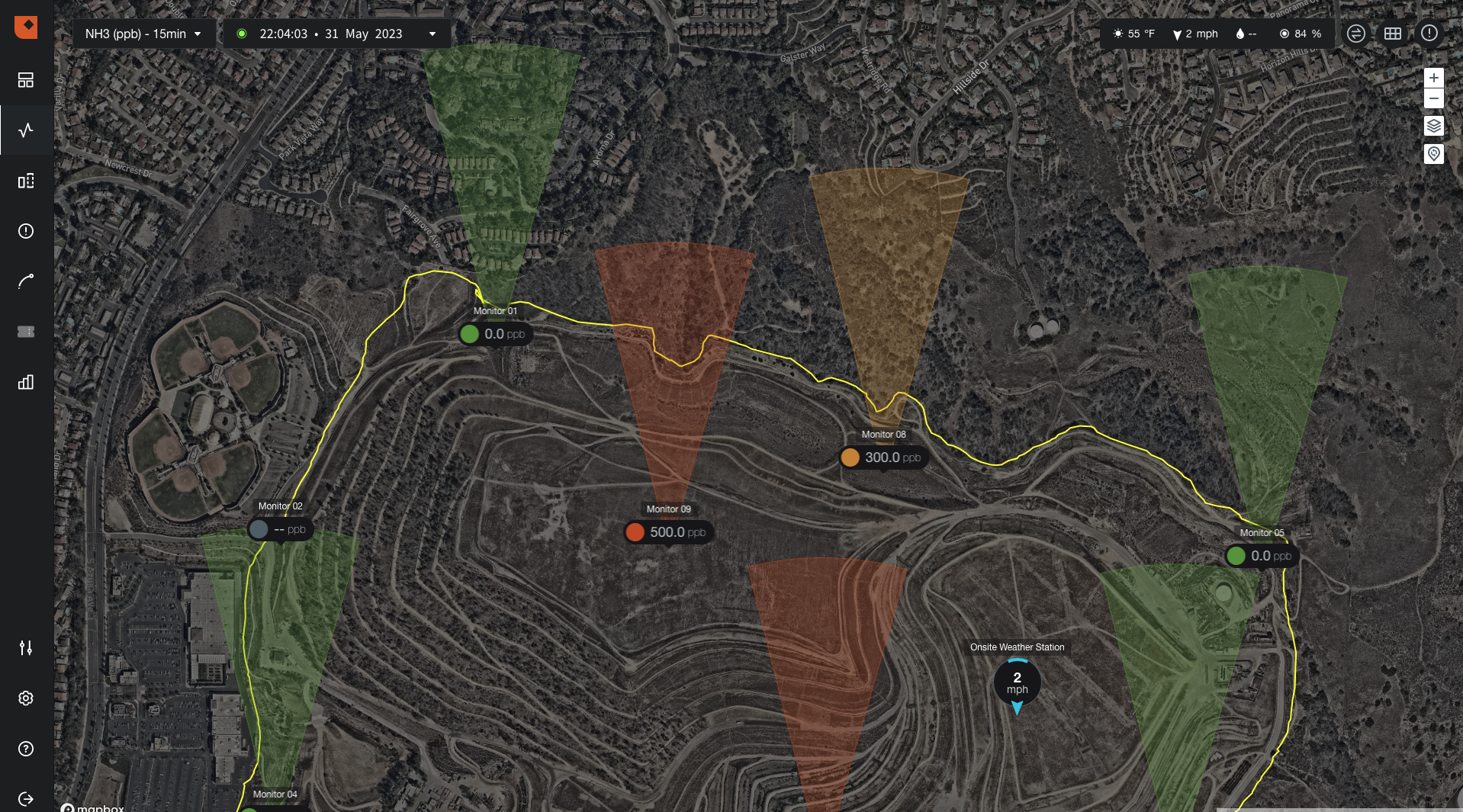Landfills aren't only a source of waste disposal, but they also emit foul odours that have a severe impact on the environment and neighbouring communities. As populations grow, the demand for waste disposal increases, leading to the expansion of landfill sites. One of the main challenges associated with landfills is the odour caused by biological processes that occur during waste decomposition.
Managing landfill odour is crucial to maintaining public health and improving the quality of life in neighbouring communities. Fortunately, hyperlocal weather forecasting and real-time monitoring networks offer potential solutions that can support odour control strategies at landfills. In this article, we explore how weather forecasting and real-time monitoring networks can help with odour management at landfill sites.
Step 1: Implement a real-time odour monitoring network with local weather data
Real-time odour monitoring networks can provide accurate and real-time data on the odour, temperature, wind speed and direction, and other relevant parameters on and around the landfill site. Monitoring networks can help landfill managers to evaluate whether their odour control strategies are working or not. Moreover, monitoring networks can alert landfill operators of any sudden problems that require an emergency response.
Landfill operators can use data collected to proactively work with regulatory stakeholders to report the issue and request assistance in addressing the situation. Communication with local authorities can help coordinate responses to reduce negative environmental impacts.
 Envirosuite's Omnis software can provide an instant understanding of current environmental performance with visualisation of odour monitoring networks at landfills.
Envirosuite's Omnis software can provide an instant understanding of current environmental performance with visualisation of odour monitoring networks at landfills.
Step 2: Analyse how local weather affects odour dispersion patterns
Odour complaints directed and landfills can spike in the days following heavy rainfall or severe wind gusts. Understanding the patterns of odour dispersion is crucial to the mitigation of odours. By using hyperlocal weather forecasting models, landfill managers can predict when and where odours are likely to cause a problem.
Using hyperlocal weather forecasting with data collected from monitoring networks to enhance odour control measures can not only improve environmental performance and improve the quality of life for neighbouring communities, but it can also result in cost savings. Landfill operators can avoid emergency situations that often result from inadequate management of weather and odour-related issues. Correct responses to weather-related issues can reduce the potential cost associated with operational mismanagement, regulator penalties or fines, and legal disputes concerning odour impact.

'Arcs of Infleunce' from Envirosuite's Omnis software help instantly understand the most likely source or area with sources that could be causing an unfolding emissions event or a threshold breach.
Step 3: Identify the most problematic areas across the landfill
Hyperlocal weather forecasting can help landfill managers plan their odour mitigation strategies, such as adjusting their gas collection systems or initiating proactive odour control measures, like misting.
Landfill operators may be aware that monitoring networks alone still require ongoing analysis to be proactive or risk being a nuisance. However, being able to rely on software to do that ongoing analysis hinders operational efficiency.
The Source Identification capability in Envirosuite’s Omnis platform provides a first insight of the most likely area of a known fugitive emission source at a landfill operation. Automated and rapid calculations link emission sources and measured effect almost instantly and enable action before a problem becomes serious.
This information gives users context of their current emissions and where on their facility they should focus their mitigation energy. This can offer value for landfills that have known emission sources in their facilities and need to know which source is contributing to an emission problem.
Step 4: Engage odour control measures at the right time
Landfill operators often use common odour control measures, such as misting, masking, and adsorption to mitigate odours. These measures can be enhanced by access to a weather forecasting and monitoring network. For instance, misting systems can be triggered when weather forecasting models predict adverse weather conditions that could cause odours to spread.
By integrating with weather forecasting models, the misting system can respond to incoming fronts of high moisture, isobaric differences, or wind direction changes that would otherwise cause air quality problems.
Talk to us today about proactive odour management
Odour is still a challenge for operators today despite a wide range of abatement options. It’s critical to know the precise time to engage odour control measures or how external factors like the weather might determine future impact. Lack of knowledge of these areas can lead to impacts on nearby communities which creates costly investigations and disruptions from lawsuits and fines. This results in poor publicity for site operations in the media and a damaged reputation.
Hyperlocal weather forecasting and real-time monitoring networks can play an essential role in supporting odour control strategies at landfill sites. By understanding weather patterns and how they can impact odour dispersion, landfill operators can integrate with their odour control measures to ensure that they are optimised for reducing the negative impact of landfill sites on public health and neighbouring communities.
Get in touch to find out how we can help your site avoid problems, reduce costs, and maintain a good reputation in the communities you serve.
